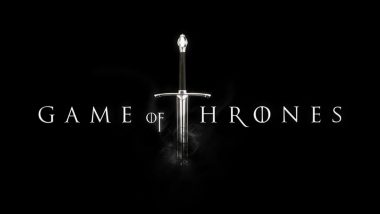Researchers from the UK and Ireland universities have come together to examine A Song of Ice and Fire, the book on which the much-loved TV series Game of Thrones is based and unravelled some fascinating secrets behind it. A team of physicists, mathematicians, and psychologists from Coventry, Warwick, Limerick, Cambridge, and Oxford universities used data science and network theory to analyze the acclaimed book series by George R R Martin, a paper on which was recently published by the Proceedings of the National Academy of Sciences of the USA. Jason Momoa Reveals He and His Family Were ‘Starving’ After His Game of Thrones Character Was Killed Off in 2011
The team found that despite over 2,000 named characters in A Song of Ice and Fire and over 41,000 interactions between them, at the chapter-by-chapter level, these numbers average out to match what we can handle in real life.The study shows the way the interactions between the characters are arranged is similar to how humans maintain relationships and interact in the real world. Moreover, although important characters are famously killed off at random as the story is told, the underlying chronology is not at all so unpredictable, the research shows. Emilia Clarke Birthday: 5 Best Moments of the Actress as Daenerys Targaryen on Game of Thrones (Watch Video)
Even the most predominant characters, those who tell the story, average out to have only 150 others to keep track of. This is the same number that the average human brain has evolved to deal with. While matching mathematical motifs might have been expected to lead to a rather narrow script, Martin keeps the tale bubbling by making deaths appear random as the story unfolds. But, as the team shows, when the chronological sequence is reconstructed the deaths are not random at all: rather, they reflect how common events are spread out for non-violent human activities in the real world.
"These books are known for unexpected twists, often in terms of the death of a major character; it is interesting to see how the author arranges the chapters in an order that makes this appear even more random than it would be if told chronologically," said Dr Padraig MacCarron, a postdoctoral researcher at the Centre for Social Issues Research, and Mathematics Applications Consortium for Science and Industry at the University of Limerick in Ireland.
The Game of Thrones has invited all sorts of comparison to history and myth and the marriage of science and humanities in this paper opens new avenues to comparative literary studies."Social networks of the most connected characters, while seemingly extensive, mirrored the typical range of social networks that humans maintain. Furthermore, the characters' social networks did not extend beyond the cognitive limit of social connections that humans are able to sustain.
Although the time intervals between significant deaths in relation to the story's timeline may appear random, they are not told in chronological order. Re-arranging them in order of which they occur, they follow a pattern more commonly observed in reality," added Dr. MacCarron. It shows, for example, that it is more akin to the Icelandic sagas than to mythological stories such as the Tain Bo Cuailnge or Beowulf. The trick in the Game of Thrones, it seems, is to mix realism and unpredictability in a cognitively engaging manner."
People largely make sense of the world through narratives, but we have no scientific understanding of what makes complex narratives relatable and comprehensible. The ideas underpinning this paper are steps towards answering this question," said Professor Colm Connaughton from the University of Warwick."This study offers convincing evidence that good writers work very carefully within the psychological limits of the reader," fellow researcher Professor Robin Dunbar from the University of Oxford said.
(The above story is verified and authored by ANI staff, ANI is South Asia's leading multimedia news agency with over 100 bureaus in India, South Asia and across the globe. ANI brings the latest news on Politics and Current Affairs in India & around the World, Sports, Health, Fitness, Entertainment, & News. The views appearing in the above post do not reflect the opinions of LatestLY)













 Quickly
Quickly












